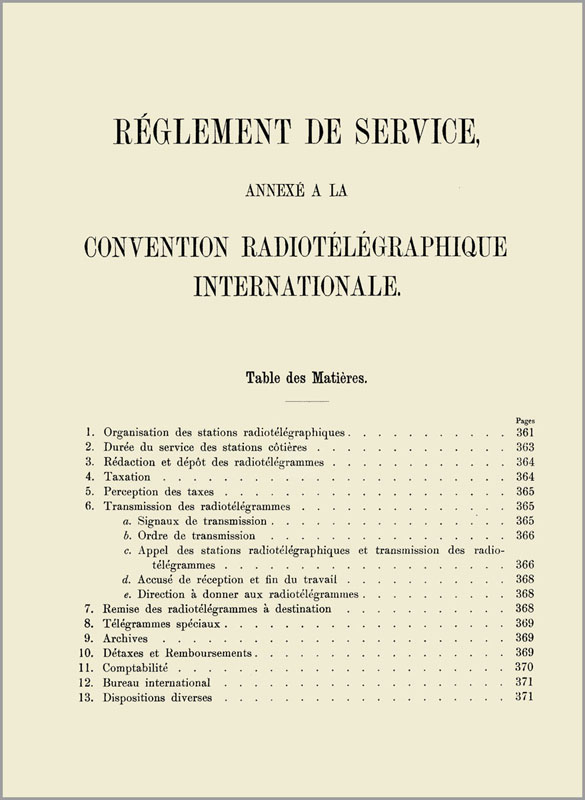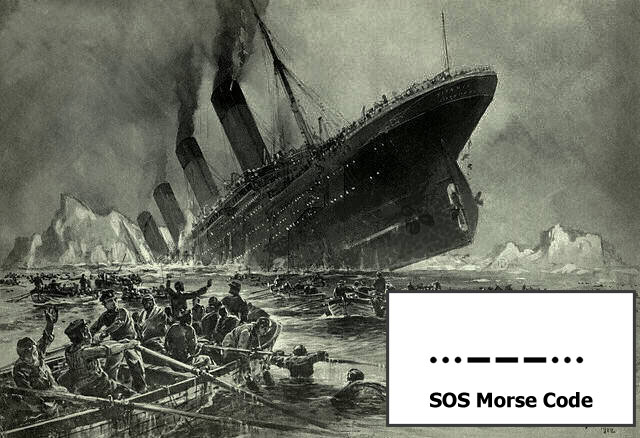 The first edition of the Radio Regulations (1906) had only fifteen pages (Source: ITU) The first edition of the Radio Regulations (1906) had only fifteen pages (Source: ITU) |
This preparatory event was followed in Berlin in
1906 by the first International Radiotelegraph Conference, attended by representatives of 30 nations. It decided that the Bureau of ITU would act as the conference’s central administrator, and the Radiotelegraph Section of the Bureau began operation on 1 May 1907.
The 1906 conference produced the International Radiotelegraph Convention with an annex containing the first regulations in this field. These were expanded and revised by numerous subsequent conferences, and became known as the
Radio Regulations. Today, given the multitude of wireless services, the regulations include more than 1000 pages of information on how the limited resource of radio-frequency spectrum – as well as satellite orbits -- must be shared and used internationally.
 In 1982, volunteers assembled and packed 10,000 copies of the two-volume set of the Radio Regulations. If it had been possible to make a single stack of the 51,393,608 A4-size pages that were printed, the result would have been nearly 12 times the height of the Eiffel Tower (300m)! (Source: ITU)
In 1982, volunteers assembled and packed 10,000 copies of the two-volume set of the Radio Regulations. If it had been possible to make a single stack of the 51,393,608 A4-size pages that were printed, the result would have been nearly 12 times the height of the Eiffel Tower (300m)! (Source: ITU) |
 The 2012 edition of the Radio Regulations is a four-volume set and is available in the six official languages of ITU (Source: ITU) The 2012 edition of the Radio Regulations is a four-volume set and is available in the six official languages of ITU (Source: ITU) |
 After the Titanic disaster in April 1912, the second International Radiotelegraph Conference met in London. Safety measures were a priority for discussion and the conference approved Article 9 of the convention that regularized the priority of distress calls over other telegraph calls. After the Titanic disaster in April 1912, the second International Radiotelegraph Conference met in London. Safety measures were a priority for discussion and the conference approved Article 9 of the convention that regularized the priority of distress calls over other telegraph calls. |
The conference also established
“SOS” as the international maritime distress call – one of the first steps in the vital field of emergency communications. But the sinking of the ocean liner
Titanic in 1912 showed the need for further improvements. Just a few months after the tragedy, the 1912 International Radiotelegraph Conference, held in London, agreed on a common wavelength for ships’ radio distress signals. Also, every ship was instructed to maintain radio silence at regular intervals, when operators should listen for distress calls.
Through the 1920s the use of radio grew rapidly, including for popular broadcasting. To improve the efficiency and quality of operation, the 1927 Washington conference allocated frequency bands to the various radio services (fixed, maritime and aeronautical mobile, broadcasting, amateur, and experimental).
